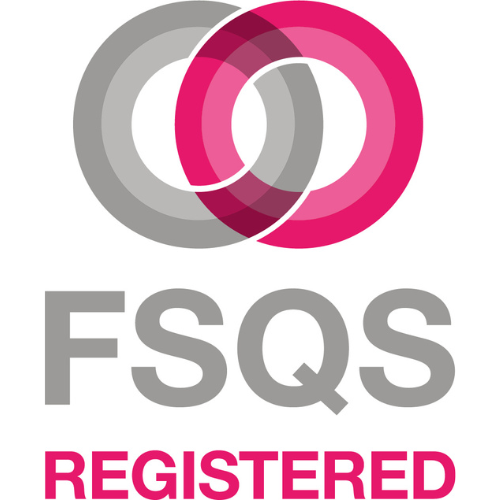Since the issue of the FCAs’ papers on value in the distribution chain in April this year ICSR has been involved in a number of discussions and debates with clients and others about what the impact is on current practice and how firms can meet their obligations. These discussions peaked when we had the opportunity to also ask representatives of the FCA to explain some of the finer points.
It is clear that firms continue to be uncertain and confused about how to deal with situations where the manufacturer has little or no control over the ultimate distributor or others in the chain.
We hope in this article to help clarify some of the issues and identify how firms may be able to ensure that they are meeting their obligations.
For a general commentary on the various documents issued by the FCA in April please see the article on Value, Pricing and the GI Distribution Chain published in April 2019 or for a discussion on Product Governance our article on the IDD.
The Primary Issue
Manufacturers of insurance products, whether sole or joint manufacturers and whether insurers, brokers or MGAs (as to which see later in this article), have been put on notice by the FCA that as a part of the product governance and oversight process they must ensure that the value of the product to the customer including the impact of the distribution chain is considered during the manufacture and ongoing monitoring of performance of the product. In particular, they are expected to consider:
- The benefits the product is intended to provide to the target market
- The value considerations relevant to the target market and
- the overall cost to the end user including product costs and charges and remuneration of the distribution chain
It is the focus on the distribution chain which is raising the most interest, concern and vexation by those ICSR have been engaged with. How does an insurer, broker or MGA as one of or the only manufacturer of a product meet these requirements and ensure the customer is getting value in the product?
Distribution chains can have several or more links and:
- Products may be underwritten on a net basis by which the final broker in the chain, or even one further up the chain sets the level of the ultimate cost to the customer,
- The final distributor may not even be regulated but be selling a product under a connected contracts exemption, some other exemption or as an Appointed Representative, or
- The ultimate distributor may have its own contractual arrangements with the customer to receive fees instead or as well commission and any manufacturer interfering with that contractual arrangement may be acting in a manner which could induce a breach of contract.
What can or should a Manufacturer do?
- Pricing
The most obvious is that the manufacturer is going to need to ensure that the product governance process, usually some form of committee giving approval and overseeing performance, knows what price the ultimate customer is paying and this includes any fees the ultimate distributor may add to the premium. The FCA have been very plain about this. In their view a manufacturer cannot be certain of the customer receiving value and a fair price unless they know the full amount that the customer is paying.
They found customers were buying products where the ultimate price was much higher than the cost of production and delivery of the product driven by the high cost of distribution. This lead the FCA to the conclusion that the customer was not getting value for the product even though the customer was generally happy to buy the product. Without mentioning behavioural economics, the effective position being taken is that the customer bought the product because it was not in a fair position. The manufacturer and distributor had the unfair advantage of knowing the value and the customer did not.
In a number of cases the FCA identified products where one party in the chain would be significantly increasing the cost but providing no value other than introducing the customer to the next link in the distribution chain. Examples of this behaviour can be seen in the FCA and FSA journals going back as far as the issues involving CPP in 2012 and earlier. It provides a good example. Here the customer bought card protection insurance and ancillary services. There are various versions but in one example the cost to the customer was about £34 but the insurer only received about £1 and still made a healthy profit. The rest was distribution costs and services which were generally illusory or unused. CPP was fined £10.5 million and faced a hefty bill of reportedly more than £30 million in payments back to customers they had to identify and pay, a costly exercise. Before moving on, it is worth noting that the insurer behind the scheme was not held to account whereas under the IDD and the FCA’s rules it now could be jointly liable.
More recently examples have included GAP insurance where the car distributer has added such a significant distribution cost that the IPT paid by the customer exceeded the net premium received by the insurer and all the commissions received by the other distributors in the chain. In the particular example the FCA cited last time we met them to discuss this issue the dealer had added its own commission of over 350% of the premium required by the insurer.
On a wider basis the FCA made it clear during our discussions with them that any example where the commissions were 70% 80% or as high as 90% of the amount paid by the customer the customer was unlikely to be getting value for the product.
All firms experienced in distribution of insurance products will know the difficulties that this presents:
- A manufacturer may not know the full extent of the chain of distribution when you are deciding to approve the product. For example, a Product may be approved aby an insurer to be distributed directly to customers or via delegated authority through an MGA or broker and assume that there may be one further step in the chain, say a producing broker. What if the producing broker is actually sourcing the business from a local broker? Does the manufacturer therefore have to:
- mandate the number of links that the distribution chain may have?
- Mandate the total commission that may be paid?
- Mandate the total that the customer has to pay?
- A combination of these?
- How can a manufacturer enforce what the ultimate price paid by the insured is where a chain exists? They have the ability to contractually enforce rights against MGAs who are their agent and, if TOBAS are suitably amended, enforce rights against any immediate distributer one down the chain from them. It is difficult however to see how they will be able to enforce rights further down the chain.
- Mandating the number of links in a chain is equally likely to be difficult if not calamitous. While the long-term result may be to remove links in the chain (which does not necessarily mean that the total brokerage will decrease just that it may be distributed between less brokers) the short term could mean a reduction in access to products for consumers.
- Manufacturers will be faced with the dilemma of either complying with the FCA’s obligations and lose business from brokers who will take their business to a less compliant manufacturer or not complying to the full extent expected by the FCA.
- In a number of cases during their intelligence gathering exercises the FCA identified that the manufacturer did not know who all of the distributors in the chain were or how many there were. This is obviously going to have to change to meet their expectations.
At this point in time possibly the only way of achieving what the FCA are demanding is to reduce the distribution chain to the number of links which the manufacturer can control contractually. It may be that this will change if or when blockchain is more readily available but that is not the case now. The downside to this is likely to be a short-term loss of business as brokers move their business to less compliant manufacturers leaving compliant manufacturers with the dilemma of continuing to comply and losing business or not fully complying. That is surely not what the FCA wishes to see but it is a dynamic which may be created.
Interestingly we have seen a number of product governance processes where the pricing of the product has not been considered at all as a part of product approval or oversight process. This will need to change.
- Value and Distribution Costs
The FCA defiantly positions itself as a regulator which is not concerned with pricing. It argues that the price that a customer pays is merely a part of the question of whether the customer is receiving value and value in turn is about fairness which loops back to TCF and FCA Principle 6.
Consequently:
- While the price may be acceptable and within market norms for a product of that nature that does not mean that the customer is receiving value if:
- The terms are so restrictive as to offer little value,
- Services which form part of the product (claims payment and possibly any non-regulated services) are of little value, so
- The FCA expect manufacturers to consider not only the price but the level of “value” which the product is providing.
There are a series of considerations which arise from the diagnostic work undertaken by the FCA to reach this position.
As value is merely an element of pricing the issues faced by the manufacturer include:
- How to establish the ultimate cost being paid by the customer;
- How to determine whether the customer is getting value;
- How to control the issue.
We have discussed the first and third. The second presents its own issues.
This of course brings into question the value which a distributor brings. That is a debate which has been raging for many years. It became a focus during the 2000’s as a result of the Spitzer investigations and proceedings. There is no doubt that brokers bring value to distribution whether by identifying or negotiating an appropriate product and/or insurer for their customer or providing the customer with support in the event of a claim. That is seems remains an issue, but it is not the only one. If we look at the GAP case the FCA have been citing their concern was not only about the overall costs and the disproportionate distribution fees charged by the motor dealer they also focused on the fact that the only service being provided by the motor dealer was the introduction by the dealer to the insurance product. They sold it. This approach by the FCA suggests that the FCA will be noting not only overall costs but also the element of commission or other income received at each link of the chain and looking at the services provided at that link. This is an important development in the FCA thought process but it also raises difficult questions for the manufacturers.
Most obvious is the question of whether a manufacturer should be assessing whether each link in the chain is giving value. The FCA position would suggest that they should be but in many cases that may not be necessary. If it is possible for a manufacturer to take a high-level view and conclude that the overall cost paid by the customer including all costs of production and distribution are acceptable in which case it may not be necessary to consider the value in individual links. We have seen the extreme examples identified by the FCA. From that it may be possible to conclude that there is a level of cost which would be acceptable according to product and distribution method.
If that can be achieved the manufacturer only need set in place a process which sees exception reporting in circumstances where that level is breached, similar to risk reporting where thresholds are set. The real issue will be what might that level be? Our experience suggests that there are few cases where the FCA would consider commissions and other costs in excess of 40% of the total paid by the customer would be acceptable and in many cases their expectation could be considerably lower. As we have said there is no rule of thumb that can be applied here. It will be necessary to look at each product and each method of distribution at the time the product is being approved under the product governance process before the limit might be able to be established. Assuming a current market norm is appropriate may not be an effective approach.
There may also be products which present a greater risk where that approach is not able to be adopted. Looking at the approach adopted by the FCA there may be a rule of thumb that can be applied at this point. Products distributed by parties who are not directly regulated may be a good start. That would include products distributed by Appointed Representatives, products sold under the connected contracts exemption and those sold by distributors who do not carry on business as a product distributor.
There may be examples of other high-risk products and firms should carefully consider each product individually. An example may be where it is clear that the overall distribution costs are disproportionately high as a proportion of the overall costs paid by the customer.
In each of these cases the manufacturer needs to consider what value is being provided by each link in the distribution chain and take a view as to whether they are adding value. This will require an understanding of the service for which they are being paid and to whom that service is being provided. This in itself may be difficult particularly in the circumstances already described involving a manufacturer who does not know who all the parties in the chain are. For reasons expressed, we think this state of affairs will need to change.
There is another element to be considered. Value is based on overall service. The distribution chain costs become less of an issue the higher the level of claims frequency and as the overall loss costs increase as a proportion of the overall cost paid by the customer. This raises a different dynamic in the market. If the commission was 40% of the price paid and the loss costs were 55% leaving 5% for the insurer to make a profit from one would think that there was no issue and in general that may be right. The new dynamic is whether the insurer will be satisfied with only receiving 5% or will require more given their underlying cost base. That dynamic is taking place daily as brokers and insurers negotiate their deals. Interestingly however, it is often the case that broker commission levels are inverse to the proportion of losses as a percentage of overall cost. That is to say, the higher the insurers potential profit because actuarially assessed loss costs are low, the higher the broker commissions: there is more fat for all. it is arguable that this is one of the reasons why the FCA is looking closely at this issue. Again, there is no right or wrong level for commissions and each book of business must be looked at individually. However, insurers and brokers must now accept that the lower the actuarially assessed loss costs on a book of business the less there is value to the insured and therefore the more likely the FCA ay have issue with the level of commissions being paid in the absence of true assessment of the level of value being received by the customer.
One final thought on the question of value in the chain. The final link in the chain is often a broker who is representing the insured. That broker may elect not to receive a commission but instead charge their customer a fully disclosed fee. That is a contractual arrangement between the broker and their client. Any attempt by a manufacturer to mandate the remuneration between a broker and their client may be illegally interfering in the contractual relationship between that broker and their client.
Furthermore, that fee is unlikely to have been agreed at the time the manufacturer is considering whether to approve the product for distribution. How can the manufacturer make a decision where it is unaware of the arrangements between the ultimate broker ad their client? The answer here may be that the manufacturer can’t, but it can monitor the ultimate price paid by the insured once the product is being distributed if it can get all distributors in the chain to disclose their costs. If the manufacturer identifies that the ultimate broker has a fee agreement with the customer, it will have to carefully consider how to approach the issue. Hopefully this will be a rare case and only something that needs to be done if it seems the overall cost paid by the customer is or is verging on being disproportionate to the manufacturing costs.
Further, if the ultimate broker is being paid either a service fee or a commission it is often the case that an element of payment is deemed to be an advanced fee for helping the insured with their claims or perhaps merely for the services provided by that broker to the customer in filling out the proposal forms or advising on other elements of the insurances. How does a manufacturer determine whether that payment is value at either the time they are approving the product for distribution or monitoring the overall distribution chain earnings during the product’s life? The same general principles should apply – what we are describing now as the simple sense check on overall proportionality of cost.
So, an approach could be:
- Has a distribution cost level been set as to what may be acceptable for the product and distribution model being adopted?
- Is the product being distributed within that cost level?
- If not:
- what are the unique circumstances, and
- what value is being provided by each link in the chain, and
- are those costs justifiable or reasonable?
Net Pricing
The last time we met with the FCA we asked them whether their approach meant that net pricing was dead. Their response was that it was not. However, that response was given with a proviso: it is not dead so long as the overall cost being paid by the customer means that the customer is receiving value having regard to the level of service (loss frequency, loss costs and assistance provided by the ultimate broker in the distribution chain who is the agent of the customer) against the distribution costs.
So we go back to the start and the manufacturer must look at the level of overall costs being paid by the customer.
Who is responsible?
The new IDD/FCA rules provide for liability for poor outcomes for customers arising from poor product governance to rest with the manufacturer. The question of “who is the manufacturer?” is a question of fact but “manufacture” is defined as “creating, developing and designing”, “issuing” or “underwriting” the product. That can mean one party or many parties in a distribution chain but would usually include the insurer and in many cases will also include any MGA. Each becomes a co-manufacturer.
The view of the FCA is that if the parties in a chain have not agreed who is responsible for manufacture and distribution, they are all responsible and will be held liable. They have made clear that their expectation is that the parties involved in manufacture of a product will agree who is responsible for which elements of design and distribution.
Insurers, MGAs and brokers in a distribution chain therefore need to agree on each of the following in order to make it clear who is responsible for which elements:
- Who is responsible for design of the product – that is what the product will cover and what will be excluded. This would also include agreement over who the product is designed for, that is which target market the product is designed for.
- Who is responsible for testing the product. That is, the steps taken to determine the product is right for that target market.
- What the distribution strategy should be. That is, whether it will be sold direct, using aggregators, through chains of brokers etc.
- What the marketing strategy will be. What marketing material should be used and how and when. Often this might be the same party as the party responsible for determining distribution strategy.
- What the pricing strategy will be. As identified above this will need to include consideration of ultimate price paid by the customer and whether the customer is receiving appropriate value for the product.
- Who will be responsible for monitoring the performance of the product. That will include collation of management information in the nature of the sort of conduct risk MI that firms should already be collecting including MI on about the sales volumes, mid-term cancellations within 14 days or thereafter and reasons, claims volumes and root cause analysis on frequent claims and declinatures and complaints volumes and root cause analysis on reasons for complaints.
- Who will be responsible for taking decisions about any necessary changes the product or distribution strategy may require as a result of issues identified from the monitoring process.
Our experience since 1st October 2018 is that many firms have yet to get to grips with this full product governance process. In some cases they have yet to get the product approval process fully underway (and in rare cases at all) and in other less severe cases they are simply struggling with the monitoring and review process due to development of systems to capture the MI required to properly monitor performance of the products.
Summary
The new product governance rules require insurers, MGAs and brokers to significantly improve their approach to the development and oversight of distribution and performance of general insurance products. Some firms have responded well but many are lagging behind.
The FCA is already visiting firms in London as a part of its ongoing process of assisting firms to understand the requirements and as a part of its diagnostic work on determining whether the market as a whole has responded appropriately to the introduction of the new product governance requirements and developed their systems and controls accordingly. In some cases, they are being accompanies by the PRA who are looking at the risks to the market from the distribution chain but also asking questions about how insurers are overseeing the work done by MGAs and other brokers in relation to product governance.
Consequently, there is a need for insurers, MGAs and brokers to finish the development of their product governance processes and procedures, ensure they are operational and that agreements are being reached on who is responsible for what activities in the product oversight arena.








